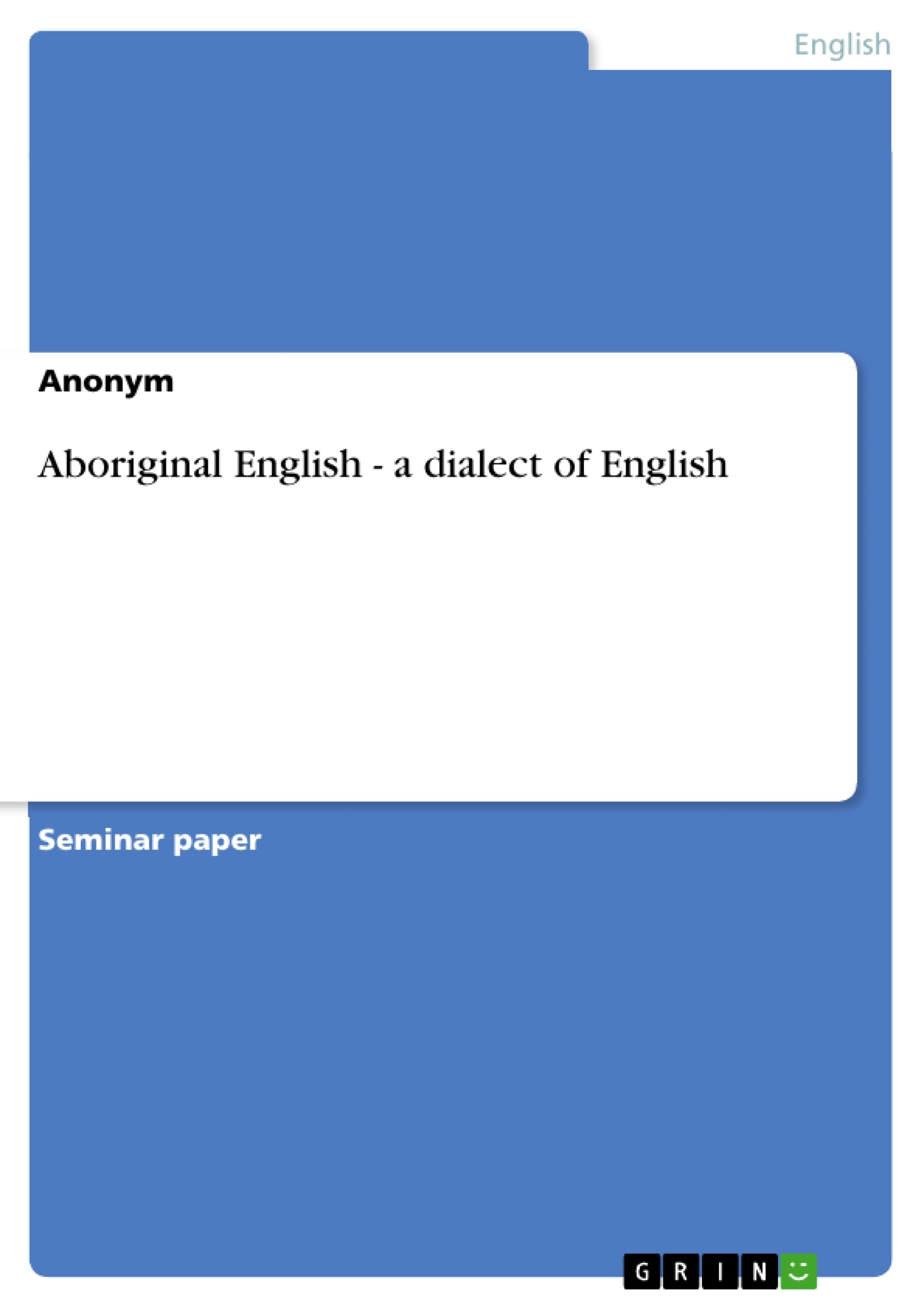During the last decades the use of English around the world became increasingly widespread. Therefore it is an important means of communication not only between speakers of different native languages as a lingua franca but also as a significant feature for selfidentification since there are so many varieties of English with distinctive linguistic as well as pragmatic features. The far-reaching influence and use of English throughout the world dates back to the colonisation centuries ago. There are various varieties of English spoken by a large percentage of people, whereas Crystal states that about one-third of the world’s population “are in theory routinely exposed to English” (quoted in Kandiah 1998: 1). Colonisation and the building of the British Empire brought English to distant places all over the world, where different forms of English began to emerge, whereas the most recent development of a so-called “global village” contributes to the rise of new varieties of English. There are several attempts to classify the different varieties of English with different frameworks. The most prominent classification is the idea of three concentric circles, which was first proposed by Kachru in 1985. This theory suggests an inner circle, where English “is the primary language [and] dominated by the ‘mother tongue’ varieties of the language” (quoted in Kandiah 1998: 6). This circle includes the UK, the USA, Canada, Australia and New Zealand. The outer or extended circle is described by Kachru as the countries where English is “an additional language” and represents “the earlier phases of the spread of English and its institutionalization in non-native contexts” (quoted in Kandiah 1998: 6). Therefore regions like India, Malaysia, Singapore, Sri Lanka, Pakistan and the Philippines are named in this circle. The last circle is called the expanding circle, whose varieties of English are considered as “performance varieties”, i.e. “the rest of the world where English is used as a primary foreign language” (quoted in Kandiah 1998: 7). However, this framework for classification lacks the ability to cover all existent varieties of English, most important the English-based pidgins and creoles. [...]
Table of Contents
- Introduction
- Language varieties
- Pidgins / Creoles
- Indigenised varieties
- National dialects
- Linguistic features of Aboriginal English
- Pronunciation
- Grammar
- Vocabulary
- Pragmatics and sociolinguistic issues
- Pragmatics
- Aboriginal English in the law
- Conclusion
Objectives and Key Themes
This paper explores the linguistic features and sociolinguistic aspects of Aboriginal English, a unique variety of English spoken by Aboriginal Australians. The paper examines the historical development of Aboriginal English, its relationship to other varieties of English, and its place within the broader context of language contact and change.
- The development of Aboriginal English as a unique language variety
- The influence of indigenous languages and cultures on Aboriginal English
- The linguistic features of Aboriginal English, including pronunciation, grammar, and vocabulary
- The pragmatics and sociolinguistic implications of Aboriginal English
- The impact of Aboriginal English on Australian law and society
Chapter Summaries
- Introduction: This chapter introduces the concept of language variety and explores various frameworks for classifying different varieties of English, highlighting the challenges of classifying Aboriginal English.
- Language Varieties: This chapter defines key terms like 'pidgins/creoles', 'indigenized varieties', 'regional dialect', and 'minority dialect', providing a basis for understanding the different types of English varieties, including Aboriginal English.
- Pidgins / Creoles: This chapter discusses the origins and development of pidgin and creole languages, specifically focusing on Kriol, an English-based creole spoken by Aboriginal Australians. The chapter explores the historical context of Kriol’s development, highlighting the impact of colonialism and social change.
- Indigenized Varieties: This chapter defines the term 'indigenized variety' and explores the process of adaptation and linguistic change that occurs when a foreign language becomes adopted by a local culture. It compares the development of Aboriginal English to other 'New Englishes' like Indian English, examining the different historical contexts and influences.
Keywords
This work focuses on the linguistic features, sociolinguistic implications, and historical development of Aboriginal English. Key terms include language contact, language change, pidgin, creole, indigenized variety, pronunciation, grammar, vocabulary, pragmatics, and sociolinguistics.
- Quote paper
- Anonym (Author), 2006, Aboriginal English - a dialect of English, Munich, GRIN Verlag, https://www.hausarbeiten.de/document/65157


